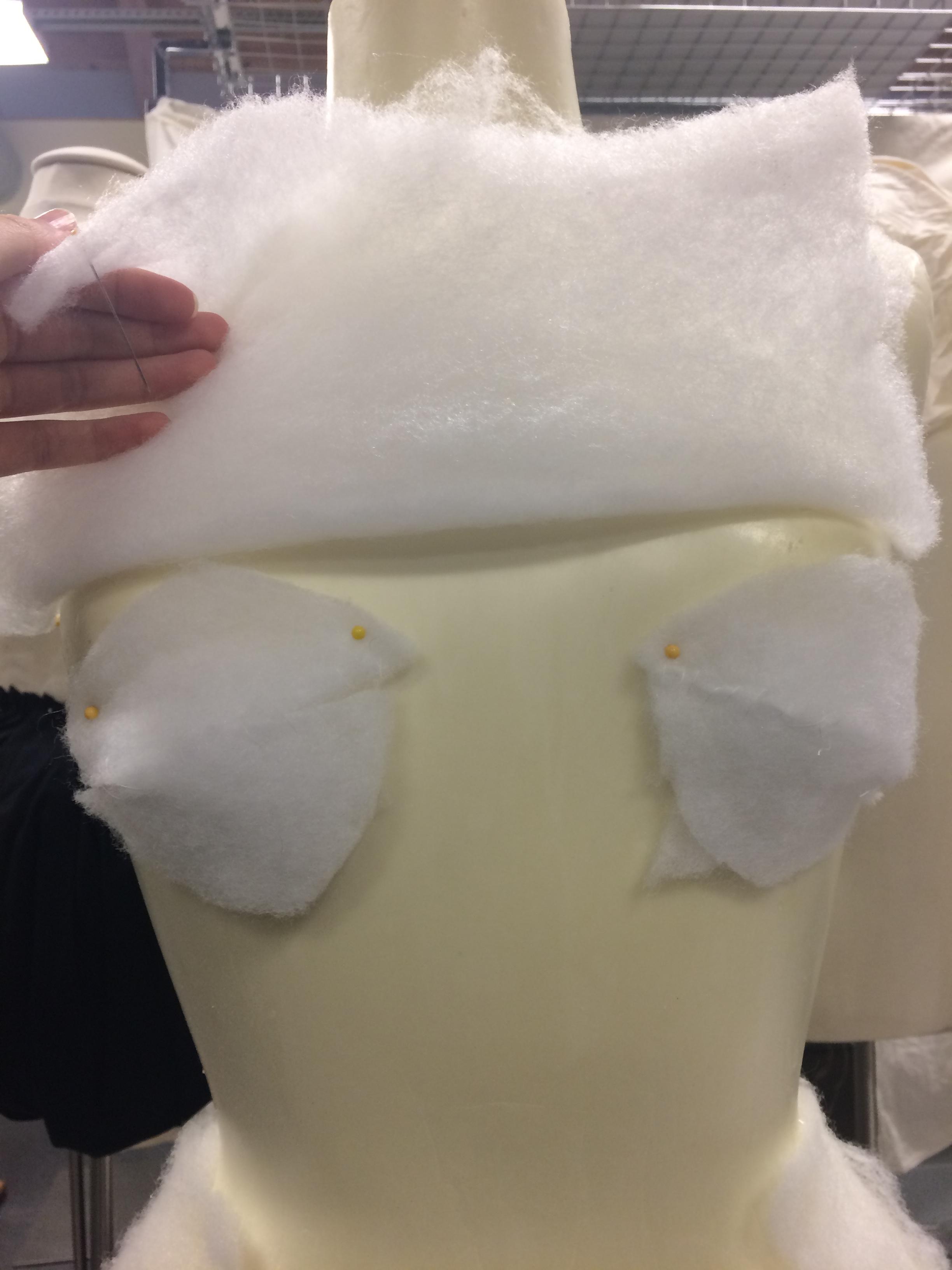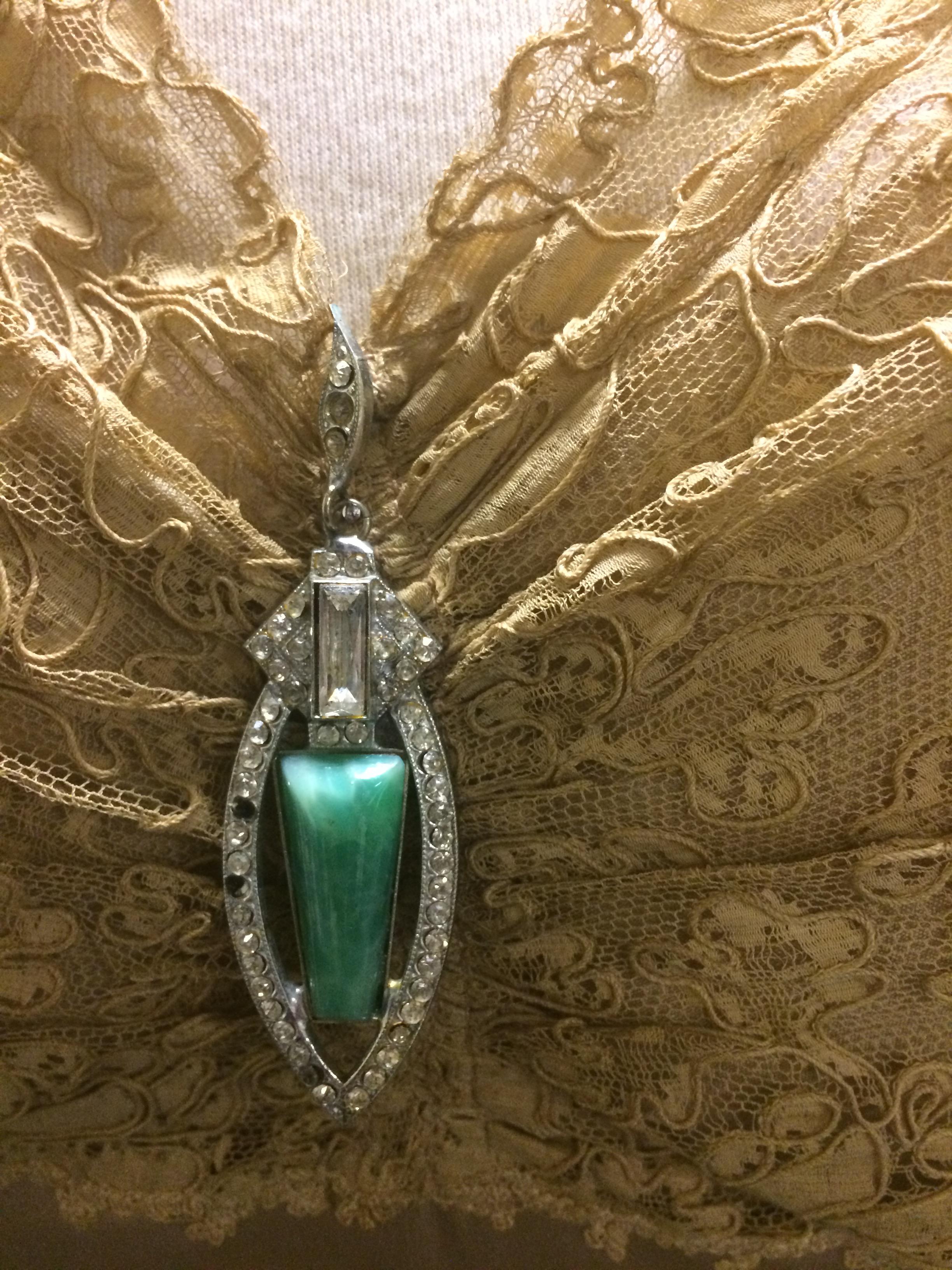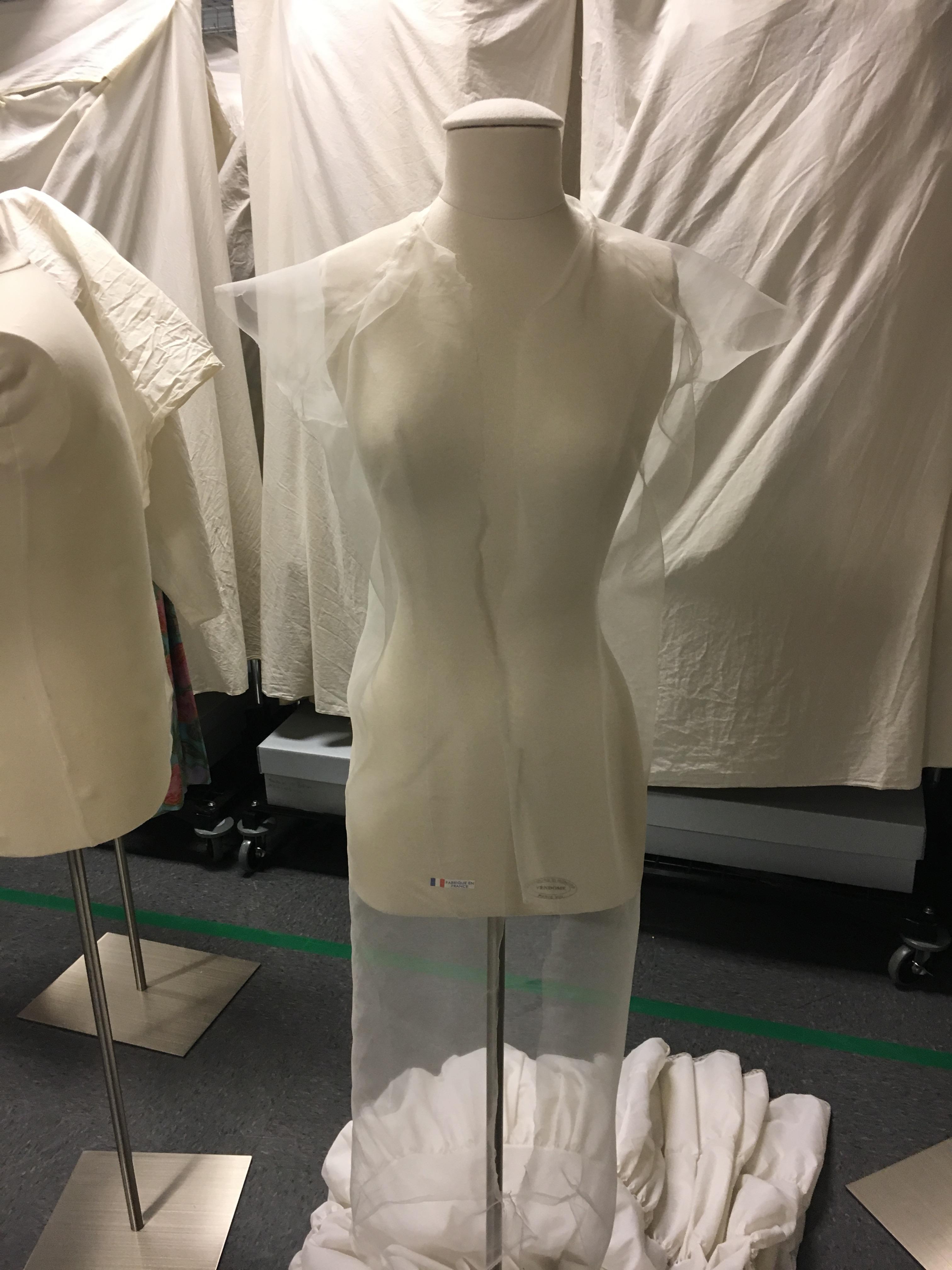An Introduction to Dress Mounting
Preparing garments for display involves a blend of experience and creativity, as I learned this month during our preparations for Maryland Historical Society’s Annual Meeting on June 28th. Our display at the event featured objects from the now-closed Hutzler Brother's department store, including the dresses and coat in this post.

Image: Wikimedia Commons
Costume displays using dress forms might look simple at first glance, but for historic clothing, the process is anything but straightforward. Our dress forms are designed with contemporary silhouettes in mind. To display garments accurately and with the proper structural support, we often have to alter the dress forms.

Fun fact: the dress has a pocket on the wearer's right side, which was probably just as exciting in the 1950s as it is now.
This late 1950s cocktail dress (1984.27.2 Gift of Mrs. Campbell Lloyd Stirling) can go on a medium dress (size 6) form, but the fit isn’t perfect. Based on the darts in the bodice and our knowledge of 1950's fashion, we can tell that the form and dress have mismatched bust lines. The skirt lies awkwardly flat, and the bows on the belt belong at the back, not the front. We pinned tulle and polyester batting to the foam form to mimic the shape of a typical 1950s girdle and conical bra.
 |
 |
The polyester padding was cut and pinned to the foam form and then the knit cover pulled over top. By padding the form out under the knit cover, we could disguise any voids or lines created by the additional padding.

The form properly supports the dress now, creating a period-accurate hourglass silhouette. After steaming to remove wrinkles and carefully repositioning the belt, we were ready to display the dress.

The dress after steaming and with arms added to support the coat.
We also mounted this silk and lace semi-formal dress from the late 1920s (1974.14.3 Gift of Mrs. Campbell Lloyd Stirling). 1920s fashion favored a more youthful stright silhouette, de-emphasizing a woman's curves. This dress fit the form without any adjustments to the bust or waist, although we did need to shave down the shoulders to avoid stressing the sleeves.
 Closeup of the pendant, with hidden support pin.
Closeup of the pendant, with hidden support pin.
Our main concern for this dress was the jade and rhinestone pendant at the neckline. The pendant’s weight falls entirely on the lace yoke, and we decided that the pendant pulled too much on the delicate fabric. We transferred the pendant’s weight to two metal straight pins, carefully inserted through holes in the lace.
 Next, we created a faux jacket of crepeline to go over the dress. This was done as the dress was to be paired with a 1920's fur trimmed coat, and we didn't want the two to come in contact with each other. This would protect the lace on the dress, the silk lining of the coat, and prevent transfer of hair from the fur trim onto the dress.
Next, we created a faux jacket of crepeline to go over the dress. This was done as the dress was to be paired with a 1920's fur trimmed coat, and we didn't want the two to come in contact with each other. This would protect the lace on the dress, the silk lining of the coat, and prevent transfer of hair from the fur trim onto the dress.

Finally, we layered a velvet and fur coat over the dress. We added arms to support the heavy sleeves, and adjusted the crepeline layer to keep the coat and dress from touching while remaining unseen. Mounting these garments allows us to see how they would have looked in their own time, and gives us a view of changing fashions over the decades.

